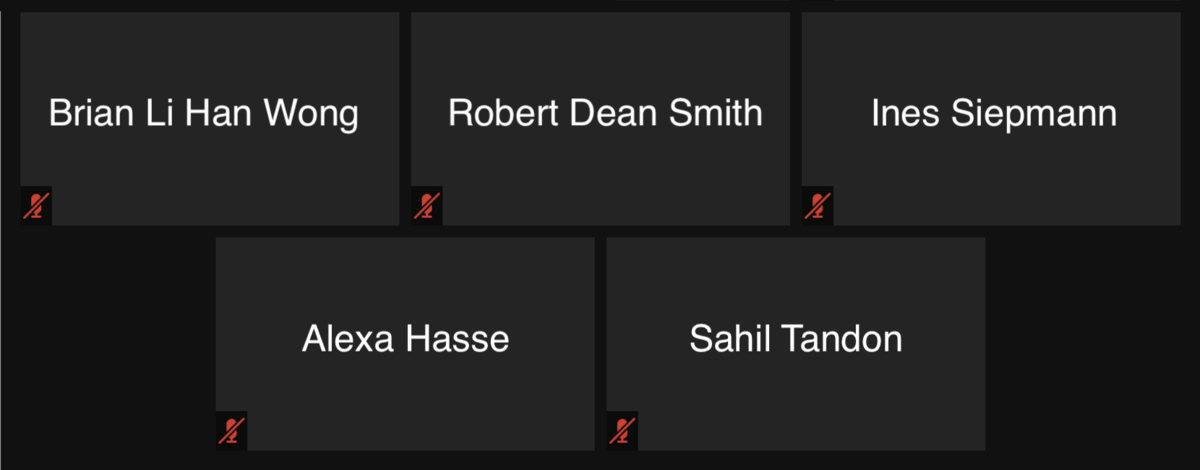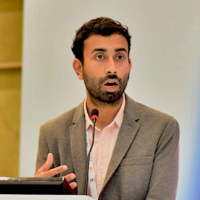Introduction
Recent discussions on digital health governance have emphasised that youth are critical stakeholders in digital health due to the unique vulnerabilities they experience and the skills they can offer within governance. The COVID-19 pandemic has fast-tracked the use of digital health technologies amongst youth; however, existing regulation and youth involvement in the design and implementation stages of digital health programmes, services, and tools are lacking. In response, stakeholders have advocated for youth ‘engagement.’ In this commentary, we use an analytical method of critique to deconstruct what we think we know and what actually unfolds in the social worlds we live amongst to assess what youth ‘engagement’ means in governance and practice. First, we explain why youth are relevant to digital health governance. Second, we critique existing claims around youth ‘engagement’ and ‘inclusion’. Finally, we provide recommendations on what meaningful youth agency may look like. We express concern that the current gap between the rhetoric and practice of youth ‘engagement’ and ‘inclusion’ may work to reify global structures of inequity if not critically addressed.
Youth and digital health
Youth are a particular demographic of interest for digital health, as nearly 70% of global youth are connected to the internet, compared to just under half (48%) of the overall population (ITU, 2017). The definition of ‘youth’ varies amongst organisations and between country contexts. However, when we refer to youth in this commentary, we adopt a broad perspective that defines youth as a group which is in a “period of transition from the dependence of childhood to adulthood’s independence … more fluid than other fixed age-groups” (UNDESA, 2013). Due to young people’s relatively high digital connectivity, skills, and lived experiences, digital health presents both challenges and opportunities in the youth context.
"We express concern that the current gap between the rhetoric and practice of youth ‘engagement’ and ‘inclusion’ may work to reify global structures of inequity if not critically addressed."
Of concern are the youth left disconnected, who are often those
disproportionately disadvantaged, including adolescent girls, gender and
sexual minorities, marginalised races, religious and ethnic groups, the
homeless, refugees and other underrepresented communities (Nanda and Tandon, 2019). For those connected, increased digital exposure comes with more online risks (Livingstone, 2020).
These risks include various forms of discrimination in digital
environments, linked to data sharing and consent infringements,
targeting and profiling, privacy and confidentiality breaches, cyber
violence, exposure to harmful content and ultimately a broad array of
rights violations (UNICEF, 2017).
These harms impact youth in various concrete forms, including access to
and quality of education, job and growth opportunities and availability
of crucial social environments necessary for physical and mental
well-being (UNICEF, 2017).
If safeguards are not administered within health governance, “private
companies or political groups … [can] exploit” youth that have limited
“power to control” their digital environments (Holly, 2020).
While calls for increased digital investment to reduce the digital
divide present an opportunity, they will not necessarily reduce
inequities for groups most at risk. The digital divide may decrease, but
a “digital canyon” may form instead, further disadvantaging the most
vulnerable, including youth (UN, 2020; UNICEF, 2020).
With respect to opportunity, actors in global health governance have already begun advocating for youth ‘engagement’ and ‘inclusion.’ For example, the WHO has co-authored the Digital Health Youth Engagement Guide and The Lancet and Financial Times Commission focused on the governance of (youth) digital health futures has recently been established (WHO et al., 2020; Kickbusch et al., 2019; Lancet and Financial Times, 2021). Organisations have recognised that youth are important stakeholders because they are opportune actors to upskill the existing health workforce and are uniquely positioned to understand the novel risks of youth’s digital interaction. Youth have not only demonstrated their ability to foster innovation and entrepreneurship within digital health, but the ability to provide novel perspectives and creativity (Wong et al., 2021 forthcoming). However, while cases have been made for youth governance and agency, action has rarely followed. Adopting the lens of critique, the following sections problematise what is meant by youth, inclusion, and engagement in an effort to strengthen youth engagement approaches in ways that may provide increased opportunity to translate policy into action.
"Of concern are the youth left disconnected, who are often those disproportionately disadvantaged, including adolescent girls, gender and sexual minorities, marginalised races, religious and ethnic groups, the homeless, refugees and other underrepresented communities."
Youth ‘Engagement’: Museumising Youth and the Danger of Reifying Inequity
In light of the unique harms the digital brings to youth and the unique skill sets youth have to contribute, digital health stakeholders have continuously called for youth ‘engagement’ and ‘inclusion.’ However, this language maintains a level of ambiguity. Include youth, yet to what degree? Does inclusion mean a one-off youth consultation, or providing youth ownership over decision making processes? Are there transparent accountability mechanisms? What are the power dynamics inherent in youth-adult relationships? To unpack these questions, we will review how these terms have been used by different actors and what this rhetoric means to powerful stakeholders during implementation.
Most recently within global governance, the WHO’s Youth-Centered Digital Health Interventions guide highlights crafting ‘safe’ and ‘fun’ environments that do not tokenise youth, suggesting that youth ‘boards’ should be created within institutions to incorporate youth perspectives (WHO et al., 2020). Other initiatives for youth engagement have included UNICEF’s U-Report, a tool that surveys youth on relevant topics to incorporate youth perspectives into policy (U-Report, 2021). Further, many public and private stakeholders have encouraged ‘hackathons’ – a rapid paced innovation event – to allow youth to develop and implement their ideas (UNESCO, 2020).
While these efforts appear promising, a closer look at how policy translates into practice is needed to understand what engagement means. Some public and private sector organisations have created youth boards (Jordan and Sorell, 2019); however, this does not mean these boards have accountability mechanisms to provide agency over policy or consistently listen to youth. Though UNICEF has been successful in harnessing youth opinions through U-Report, a closer analysis of U-Report, drawing upon a case study from Uganda, shows that youth perspectives are often not integrated into policy because these perspectives are considered incommensurable with political and economic agendas (Peixoto and Sifry, 2017). Finally, while the hype surrounding innovation may provide momentary satisfaction, few youth innovations are scaled to larger regional and national levels, especially in LMICs (Taylor, 2012). Overall, on the level of governance, actors rarely make explicit what engagement means; further, the rhetorical ambiguity of youth ‘inclusion’ and ‘engagement’ often creates gaps in governance standards that can be exploited to frame youth perspectives as incommensurable with governance priorities.
The authors are concerned about the emerging museumisation of youth. Museumising does not simply mean tokenising, in which individuals are symbolically included to demonstrate inclusivity and diversity; we use the word museumising explicitly to show how youth are put on display, claimed to be represented by those in power, and yet are kept unheard behind a glass wall (Spivak, 1992). The difference between a museum and a token is that the encased museumised subject cannot speak and be heard. We fear this is increasingly the case when analysing the rhetoric versus practice of ‘youth engagement’ in digital health. More concretely, youth are ‘included’ while their perspectives are set aside as at odds with political and economic policy agendas.
The performance of museumisation often works to reify structural inequity and inflict further harm. In response to existing inequities such as the ‘digital divide’, organisations have often used ‘engagement’ as one of the means to craft more equitable interventions. However, approaches often fail to create equity, and often reify inequity and museumisation. For example, reports have noted that even after female youth engagement, artificial intelligence algorithms still display a gender bias (Deelstra, 2020). Further, policies, programmes, and services rolled out in countries with less digital infrastructure have often been designed in high-income-countries (Ragnedda and Gladkova, 2020). Some global governance forums have openly commented to the extent that neo-colonial power imbalances between the ‘north and south’ prioritise balancing geopolitical tensions over prioritising equity in policy making (Geneva Internet Platform, 2021). As youth authors, we are of the opinion that inequality for the foreseeable future is inevitable. Claims to ‘ensure’ equity across health programmes appear idealistic and frustratingly ignorant, and as such complacent (Marx, 1867). This perspective is not simply dystopic; it is a push for actors to make the modest recognition that their programmes will likely not ensure equity and leveling the tables of inequity requires deeper philosophical reflection – a practice that existing institutions are not structurally engineered to do.
"The authors are concerned about the emerging museumisation of youth. Museumising does not simply mean tokenising, in which individuals are symbolically included to demonstrate inclusivity and diversity; we use the word museumising explicitly to show how youth are put on display, claimed to be represented by those in power, and yet are kept unheard behind a glass wall."
Rethinking Global Governance and Recommendations for Meaningful Youth Agency
To rethink and restructure digital health governance, youth must be included. Underlying this inclusion must be the tenant that youth are not a homogenous, monolithic category. Actors must adopt an intersectional perspective to define youth backgrounds when claiming to ‘engage and include’ youth that acknowledges their heterogeneity in aspects such as socioeconomic status, location, and digital access.
With this in mind, we recommend the following for meaningful youth inclusion in digital health governance:
1. Digital health governance is (a) political (choice)
The idea that youth perspectives are incommensurable with political and economic agendas is a choice. Youth perspectives can bring hard questions for existing governance paradigms, often dismissed by hegemonic agendas or by claiming that addressing these tensions is beyond the scope and capacity of organisations. We urge actors to recognise that this is a choice, and by adopting this perspective, youth are museumised.
2. De-hype innovation
Youth ‘engagement’ often takes the form of innovation. However, as detailed above, innovations are rarely implemented or scalable and create an illusion of inclusion. Often, efforts may be better spent on engaging youth by allowing them agency within efforts to build “enterprise architectures” that utilise existing technology (WHO, 2020).
3. Strive for youth agency in government processes
Youth ‘engagement’ and ‘inclusion’ does not ensure youth agency over policy. We believe that the only way to foster true youth ‘inclusion’ is by providing youth with agency in policy processes; this means ensuring youth have the ability to define, without regulation, their own inputs as well as building accountability mechanisms to translate youth inputs into tangible outputs. Successful youth agency involves incorporating youth into pre-existing structures, with mentorship and intergenerational collaboration instead of pushing them out into their own structures.
4. Make clear the benefits of youth engagement to those in power
It is helpful to make clear the benefits of youth participation, particularly to those who may be initially reluctant to incorporate youth perspectives. Research on youth participation demonstrates the positive contributions youth can bring (Powers and Tiffany, 2006; Jazquez et al., 2013), thereby encouraging stakeholder engagement of youth in all policies.
Acknowledgments: We would like to thank Micaela Neumann for volunteering their time to make important contributions to the conceptualisation and structure of this commentary.
References
- Cortesi, S. & Hasse, A., 2021. Youth and participatory research: A perspective from academia, paper submitted to the Journal of Participatory Research Methods.
- Deelstra, J., 2020. Digital tools can support "health for all"—if we consider these three things. [online] PATH. Available at: https://www.path.org/articles/digital-tools-can-support-health-for-allif-we-consider-these-three-things/ [Accessed 21 February 2021].
- Geneva Internet Platform. 2021. [Briefing #71] Internet governance in January 2021 | Digital Watch. [online] Available at: https://dig.watch/events/briefing-71-internet-governance-january-2021?utm_source=DiploMail&utm_campaign=bc1a89bfb9-email_briefing_jan_2021&utm_medium=email&utm_term=0_4510155485-bc1a89bfb9-120354028 [Accessed 21 February 2021].
- Holly, L., 2020. Health in the Digital Age: Where Do Children’s Rights Fit In?. Health and Human Rights Journal, [online] 22/2 (December 2020), pp.49-54. Available at: https://www.hhrjournal.org/2020/12/perspective-health-in-the-digital-age-where-do-childrens-rights-fit-in/ [Accessed 21 February 2021].
- International Telecommunication Union, 2017. ICT facts and figures [online]. Available at: https://www.itu.int/en/ITU-D/Statistics/Documents/...[Accessed 21 February 2021].
- Jacquez, F., Vaughn, L. M., & Wagner, E., 2019. Youth as partners, participants or passive recipients: A review of children and adolescents in community-based participatory research. American Journal of Community Psychology, [online] 51/2(March 2013), pp. 176-189. Available at: https://onlinelibrary.wiley.com/doi/abs/10.1007/s10464-012-9533-7 [Accessed 20 February 2021]
- Jordan, J. & Sorell, S., 2019. Why you should create a “shadow board” of younger employees. [online] Harvard Business Review. Available at: Click here [Accessed 19 February 2021].
- Kickbusch, I., Agrawal, A., Jack, A., et al., 2019. Governing health futures 2030: growing up in a digital world—a joint The Lancet and Financial Times Commission. The Lancet, 394/10206 (October 2019), pp. 1309. Available at: https://doi.org/10.1016/S0140-6736(19)32181-6 [Accessed 21 February 2021].
- Lancet and Financial Times, 2021. Governing health futures 2030 - The Lancet and Financial Times Commission | About. [online] Governing health futures 2030. Available at: https://www.governinghealthfutures2030.org/ [Accessed 21 February 2021].
- Livingstone, S., 2020. More online risks to children, but not necessarily more harm: EU Kids Online 2020 survey. [online] The London School of Economics and Political Science. Available at: https://blogs.lse.ac.uk/medialse/2020/02/11/more-online-risks-to-children-but-not-necessarily-more-harm-eu-kids-online-2020-survey/ [Accessed 20 February 2021].
- Marx, K., 1867. Das Kapital. Verlag von Otto Meisner.
- Nanda, P. & Tandon, S., 2019. “The Time They Are A-Changin” : using technology for ASRHR in the 25 years since ICPD. Sexual and Reproductive Health Matters. 27/1 (November 2019), pp. 349-351. Available at: https://www.tandfonline.com/doi/full/10.1080/26410397.2019.1676023 [Accessed 21 February 2021]
- Peixoto, T. & Sifry, M.L., 2017. Civic Tech in the Global South: Assessing Technology for the Public Good. Washington, DC: World Bank and Personal Democracy Press. © World Bank. Available at: https://openknowledge.worldbank.org/handle/10986/27947 License: CC BY 3.0 IGO. [Accessed 21 February 2021]
- Powers, J. L. & Tiffany, J. S., 2006. Engaging in participatory research and evaluation. Journal of Public Health Management and Practice, [online] 12/6 (November 2006), pp. 79-87. Available at: https://journals.lww.com/jphmp/Fulltext/2006/11001/Engaging_Youth_in_Participatory_Research_and.15.aspx [Accessed 18 February 2021].
- Ragnedda, M. and Gladkova, A., 2020. Digital Inequalities in the Global South. Palgrave Macmillan.
- Spivak, G., 1992. Interview With Gay atri Chakravorty Spivak: New Nation Writers Conference in South Africa. ARIEL: A Review of International English Literature, [online] 23(3), pp.29-47. Available at: https://journalhosting.ucalgary.ca/index.php/ariel/article/download/33464/27510/0 [Accessed 21 February 2021].
- Taylor, B., 2012, Please can we all just stop calling it “innovating”? [online] Harvard Business Review. Available at: https://hbr.org/2012/05/please-can-we-all-just-stop-innovating [Accessed 18 February 2021].
- UNDESA, 2013. Definition of Youth. [online] Available at: https://www.un.org/esa/socdev/documents/youth/fact... [Accessed 21 February 2021]
- UNESCO, 2020. Winners of the Global Media and Information Literacy youth hackathon reveal inspiring projects to fight disinfodemic. [online] Available at: https://en.unesco.org/news/winners-global-media-and-information-literacy-youth-hackathon-reveal-inspiring-projects-fight [Accessed 21 February 2021].
- UNICEF, 2017. The State of the World’s Children: Children in a Digital World. [online] Available at: https://www.unicef.org/media/48601/file [Accessed 21 February 2021]
- UNICEF, 2020. How many children and young people have internet access at home? [online] Available at: https://data.unicef.org/resources/children-and-you... [Accessed 21 February 2021]
- United Nations, 2020. A ‘digital canyon’: 1.3 billion school-aged children can’t log on to internet at home. [online] Available at: https://news.un.org/en/story/2020/12/1078872 [Accessed 21 February 2021]
- U-Report, 2021. U-Report. [online] Unicef.org. Available at: https://www.unicef.org/innovation/U-Report [Accessed 23 February 2021].
- WHO, 2020. Digital implementation investment guide (DIIG): integrating digital interventions into health programmes. [online] Geneva. Available at: https://apps.who.int/iris/handle/10665/334306 [Accessed 21 February 2021].
- WHO, UNFPA, UNICEF and UNESCO, 2020. Youth-Centred Digital Health Interventions: A framework for planning, developing, and implementing solutions with and for young people. [online] Geneva. Available at: https://www.unfpa.org/publications/youth-centred-digital-health-interventions-framework# [Accessed 21 February 2021].
- Wong, B.L.H., Khurana, M.P., Smith, R.D., et al., forthcoming 2021. Harnessing the digital potential of the next generation of health professionals. Human Resources for Health.







